Prague | Praha
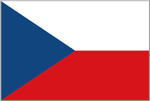
Historic Bohemian capital in the heart of Europe

The glorious capital of the Czech Republic, or Czechia as the government refers to it, Prague is one of the foremost tourist destination cities in Europe, superseded in visitation only by London, Paris, Rome and Istanbul. Historically the capital of Bohemia, there has been a settlement at Prague for over three thousand years, but the city’s current form began to take shape with Prague castle being founded around the year 800. United with its erstwhile partner Slovakia throughout most of the 20th century, Czechoslovakia emerged from the remains of the Austro-Hungarian Empire in 1918, and itself peacefully split in 1989 following the Velvet Revolution. Czechia was one of the first countries to hit the tourist scene after the fall of the Iron Curtain, and has gone from strength to strength ever since.
We visited Prague from Edinburgh during the Easter weekend of 2017, a time when the flights were expensive and the streets were extra-specially packed with marauding tourists. At least they diluted the stag parties. We stayed for three nights at a fairly basic hotel near Wenceslas Square, in a room above the main entrance where guests would stand and smoke, oblivious to our fresh air needs. It was, however, a very successful trip – I found Prague to be impressively equipped with architectural delights, tasty treats and cold beer, not to mention a cheerful festive atmosphere – the perfect place for a European city break.

Wenceslas Square is one of several large gathering places in the old city, and favoured for demonstrations including perhaps most famously, the Velvet Resolution. This marked the beginning of the end of communism in the country, and precipitated the breakup of Czechoslovakia. The National Museum in the distance was having some work done, and the Easter markets were in full swing during our visit.
The Astronomical Clock Prague Orloj graces Old Town Square, on the side of Old Town Hall itself. It represents twenty-four hour time, the position of the sun and moon, sunrise, sunset and the months of the year amongst multiple other functions. It is also adorned with small statues representing various saints, plus death in the form of the skeleton on the top right. It dates from 1410 and is the world’s oldest working astronomical clock.
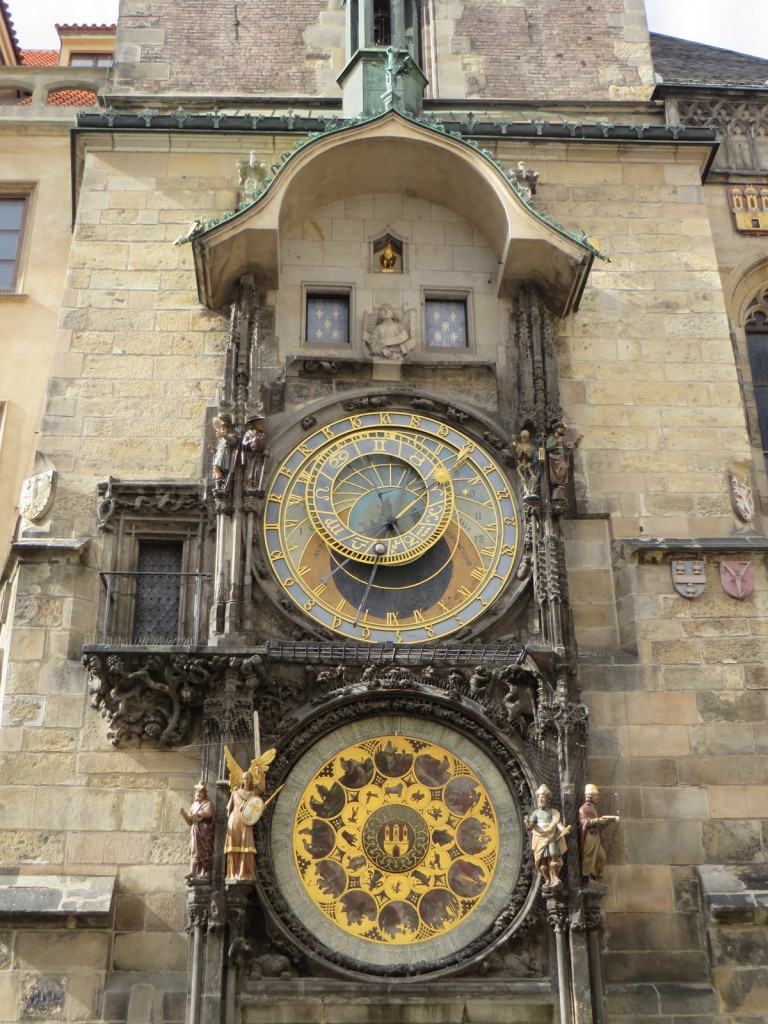
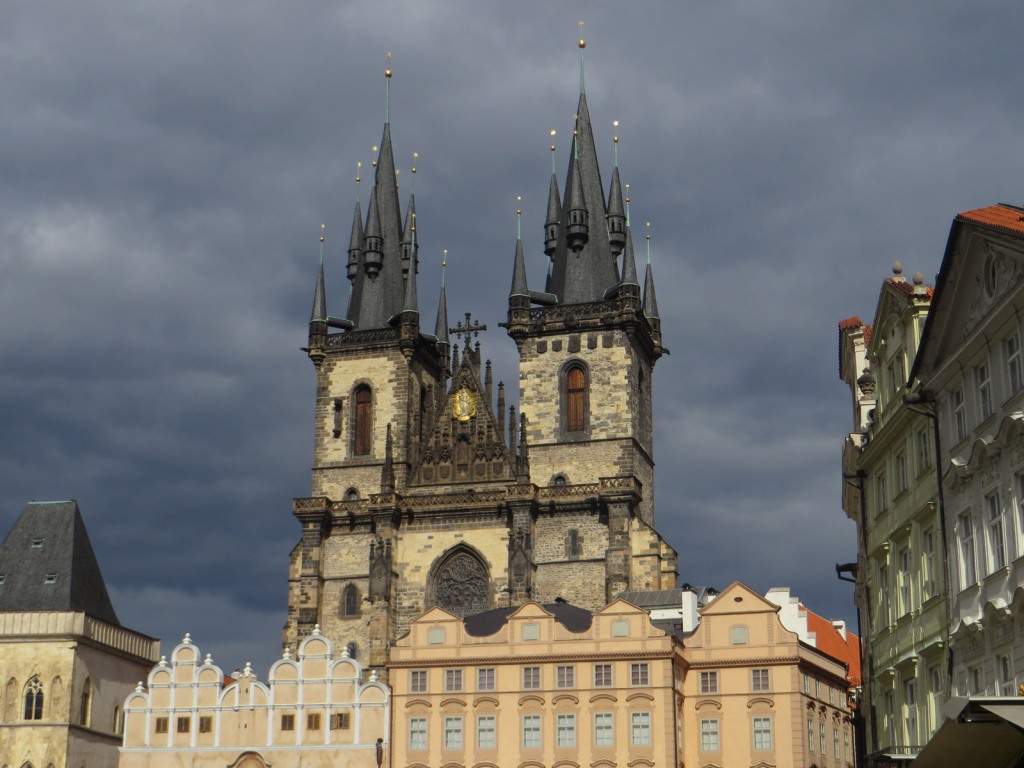
Old Town Square is dominated by the Church of Our Lady Before Týn, soaring eighty metres above the market stalls and bristling with eight small spires per tower giving it a very forbidding, gothic look.
We sampled a few of the Easter market stall treats, including spiral fried potatoes, and chimney cake as seen here. It originated in Transylvania when it was part of Hungary.


Next, we braced ourselves for the sea of tourists crossing Charles Bridge, seemingly the nexus of humanity within Prague if not Europe itself. The bridge is lined with thirty saintly statues, who try but fail to exert any semblance of calm upon the heaving hordes. It was not a quick crossing.
Saint John of Nepomuk was one of the less fortunate saints represented on Charles Bridge, as it was from this point that he was forced into the river and drowned in 1393. Most likely by the surging mass of tourists pulsing along the bridge.

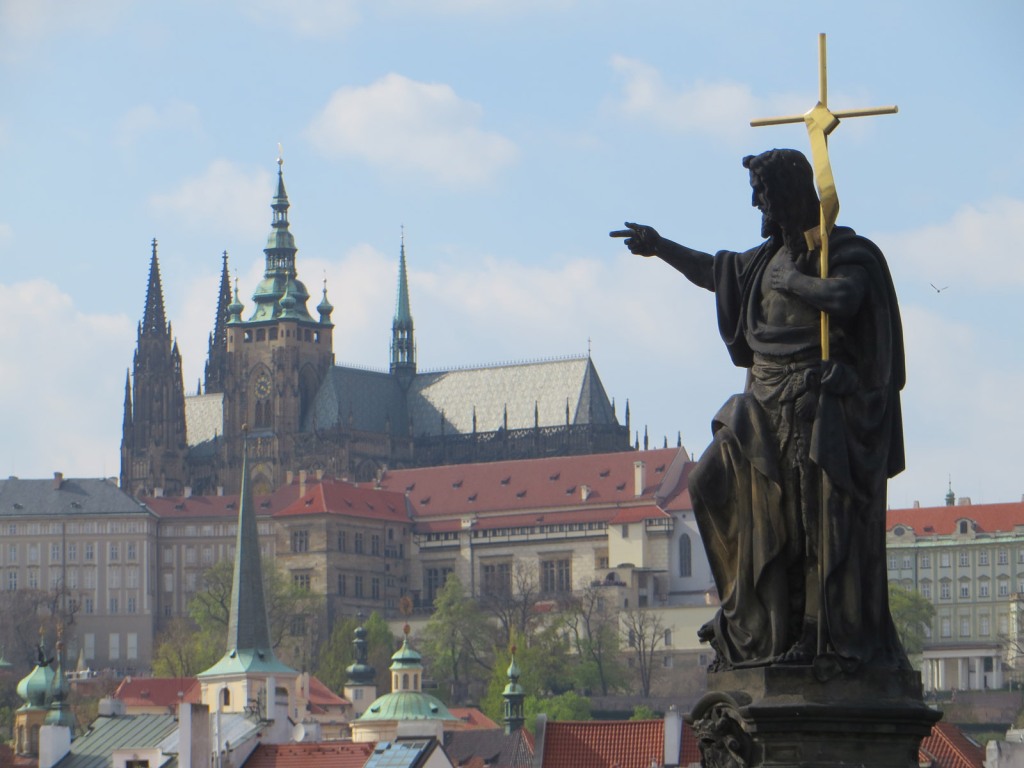
“This way, lads”, the statue of Saint John the Baptist helpfully pointed out, as we were tried to figure out where Prague Castle was. He has been helping tourists since 1857.
Three towers guard Charles Bridge, we headed up Lesser Town Bridge Tower at the west end to see the red roofs of Prague.
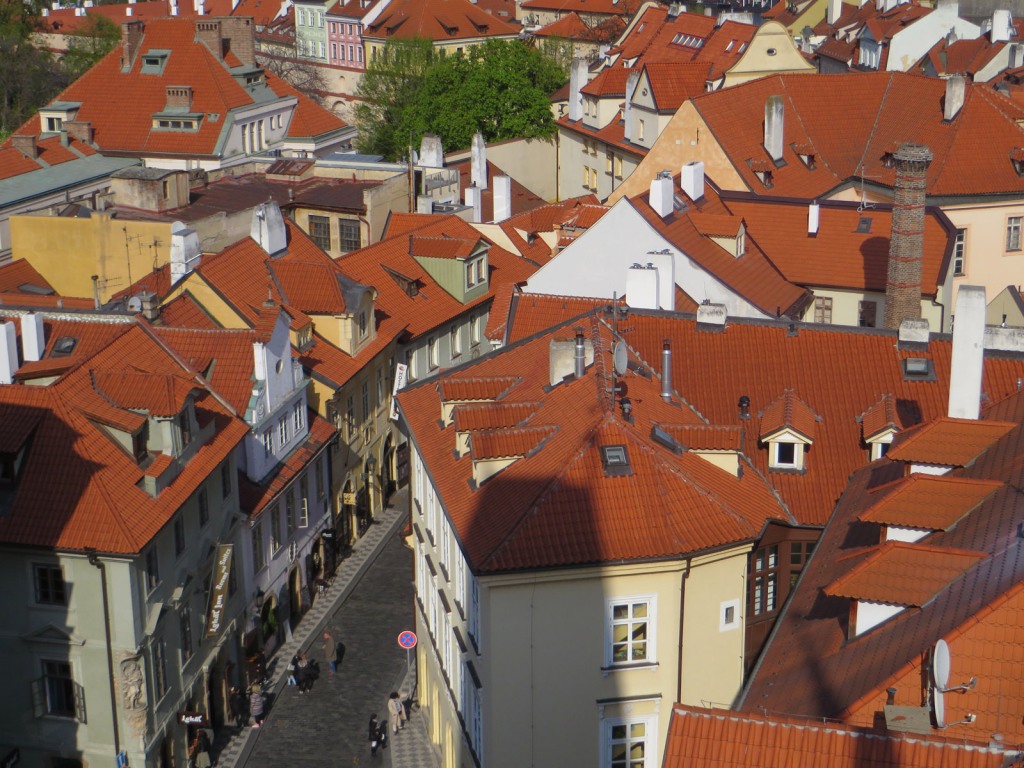

Medieval walkways connect the tower and a gatehouse, and a surprising lack of tourists given the trouble we had getting across the bridge.
Matthias Gate is the western entrance to Prague Castle, flanked by a pair of Herculean bouncers demonstrating what happens to unruly tourists – you may choose a good clubbing, or a swift stabbing. The castle is more of a complex of many buildings, and is also the home of the Bohemian Crown Jewels.
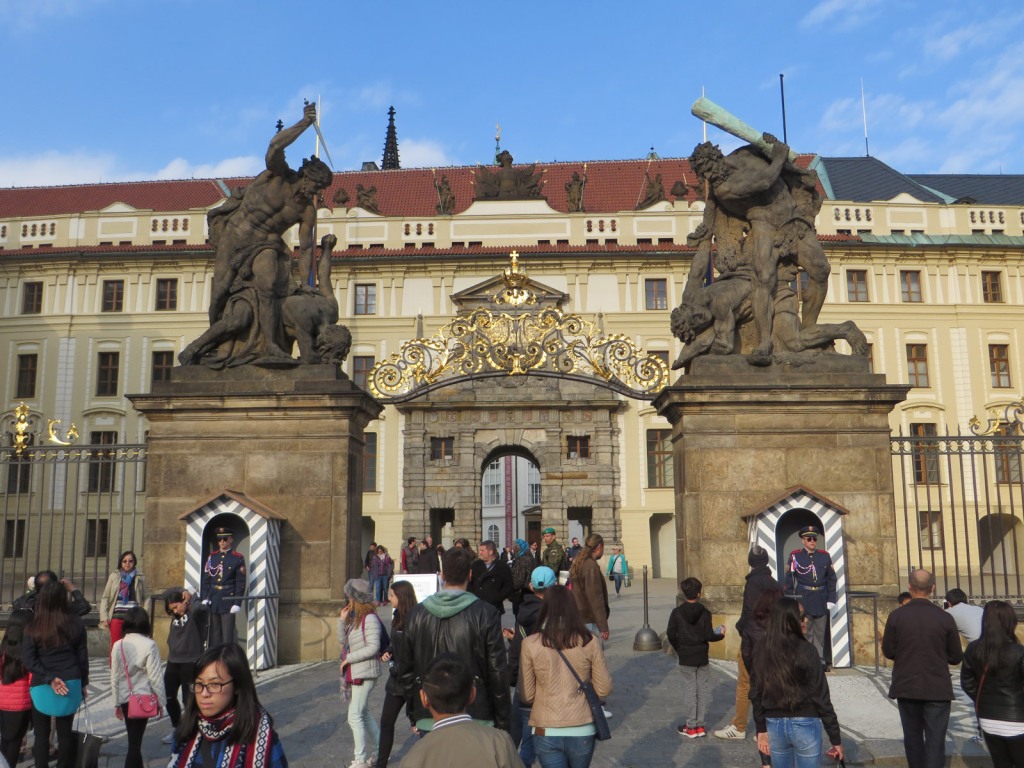

St Vitus Cathedral is the most prominent building within the castle grounds, visible all up and down the river and enduringly popular with Chinese wedding photographers. It dates from 1344, but the first church on this site was built around AD 930.
Heading through the castle grounds, we found ourselves in Golden Lane, a cutesy row of lodgings built for the castle guards but populated by goldsmiths from the 17th century.

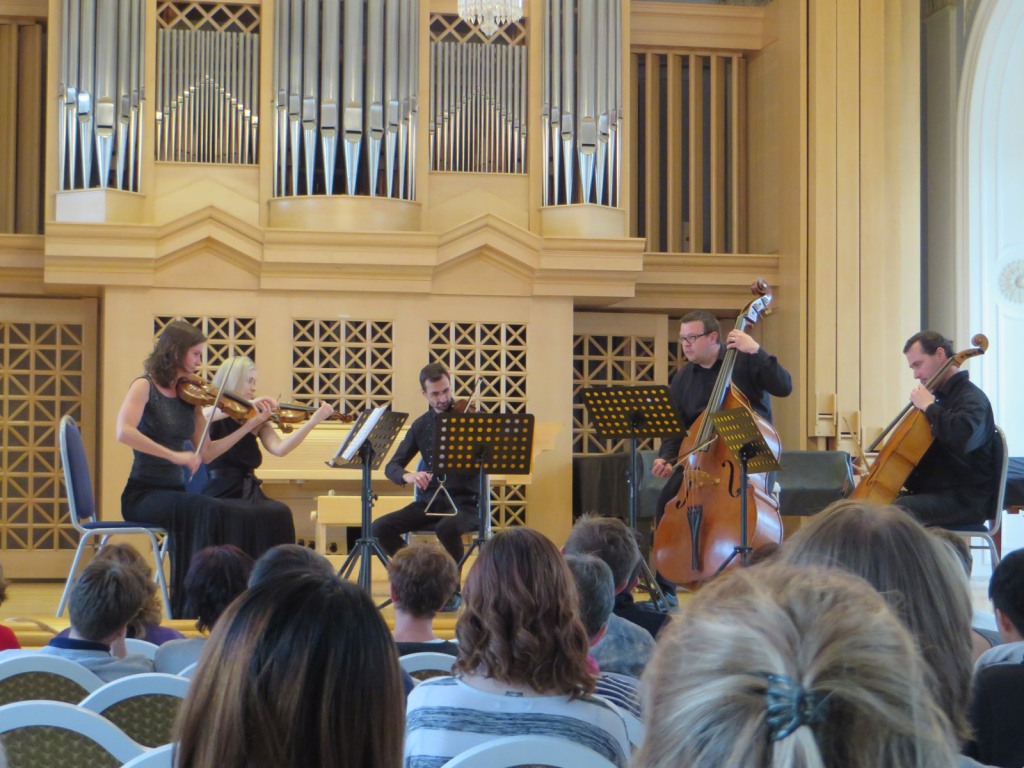
Being in Central Europe, Prague has a great classical music scene, so we took in a small concert at Liechtenstein Palace. It was only around an hour long, but the musicians played lots of popular tourist-pleasing standards and I felt very cultured upon leaving for a beer at the hostelry across the street.
We chanced upon the ghostly form of Il Commendatore back in the old city, its dementor-like form depicting the Cloak of Conscience from Mozart‘s Don Giovani. It’s allegedly haunted with faces appearing in flash photos of the head space, but this didn’t stop a hapless stag party member getting his head stuck in there for eight hours one fateful and hilarious day.

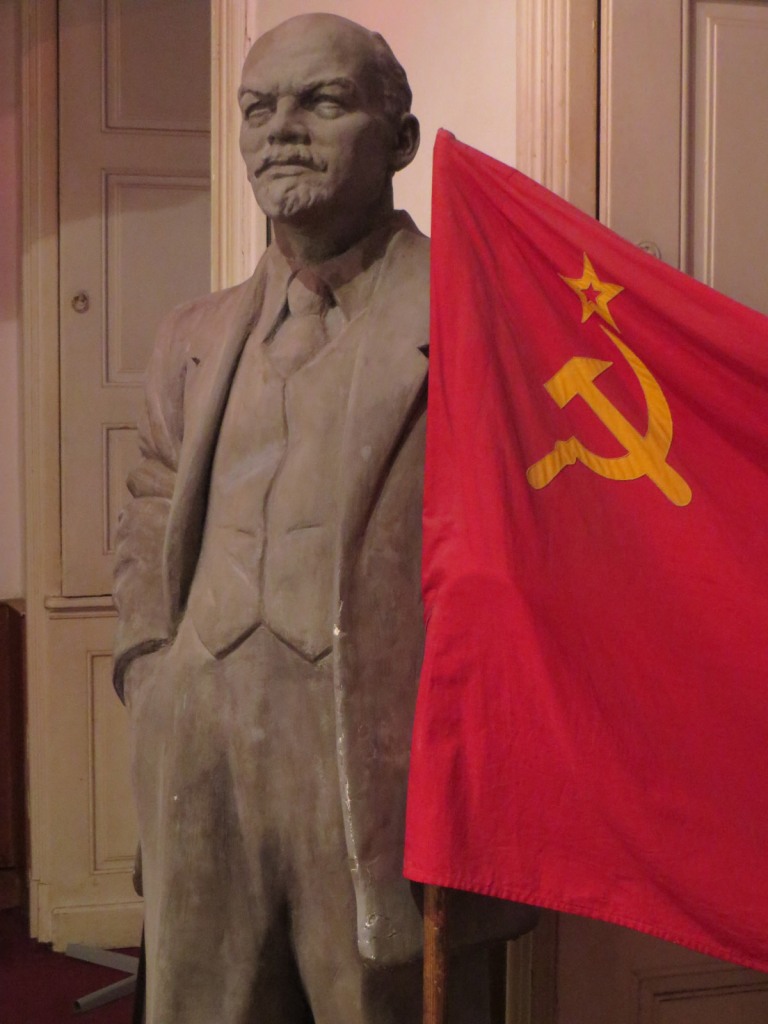
The Museum of Communism does exactly what it says on the tin, presided over by a statue of Lenin and the red flag of the USSR. It tells the story of life behind the Iron Curtain in 20th-century Czechoslovakia, and communism in general. It had the intended effect on me, as I felt thoroughly dejected and miserable by the time I left.
From Lenin to Lennon, we visited the John Lennon Wall which has been used as a canvas for peaceful graffiti since shortly after his death in 1980. It is continually evolving as new drawings and writings are added over the old, so likely no longer looks at all like it did to us in 2017.

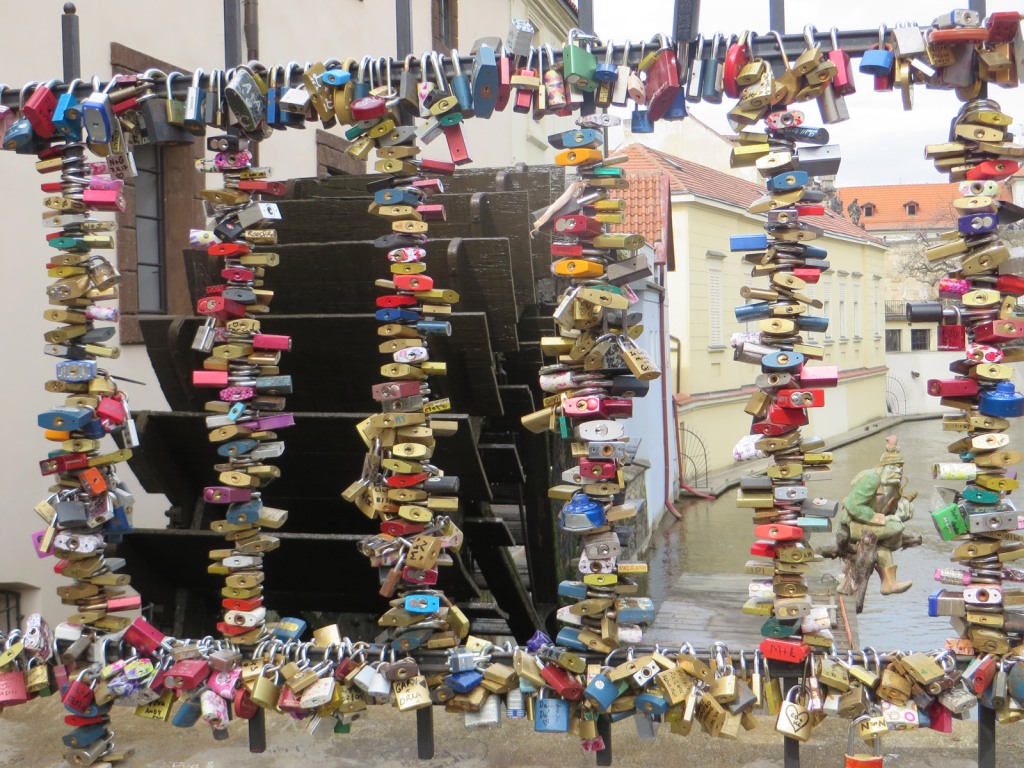
Not far from the Lennon Wall, the habit of attaching locks to bridge railings is well represented on this small bridge over Čertovka canal. A little gremlin clings on by the water wheel.
The Franz Kafka Museum greets visitors to the story of the eponymous author’s life, with a statue of two blokes relieving themselves on a map of the Czech Republic. Kafka’s writings often concerned well-meaning individuals who befell absurd and embarrassing situations. Reading some of exhibits inside, I was reminded of Adrian Mole.


Looking back across the continual flow of tourists across Charles Bridge. The TV Tower is visible on the distance – more on that later.
The National Theatre glows in the afternoon light. It is one of the most magnificent public buildings in Prague and has been the home of Czech opera since throwing open its doors in 1881.

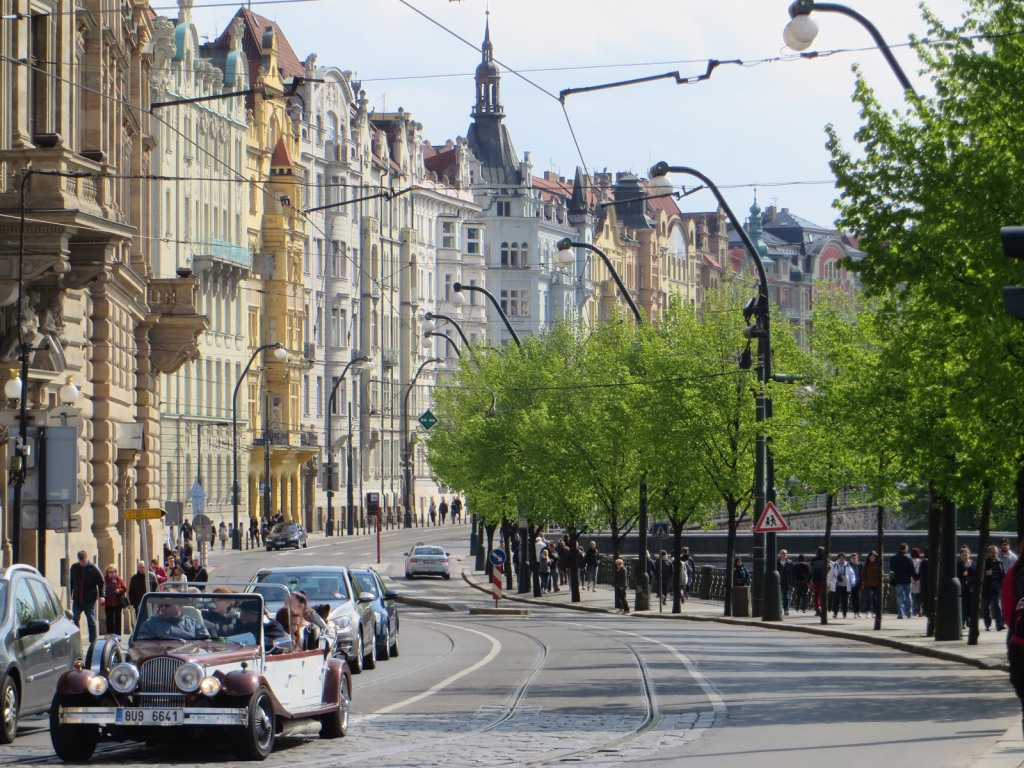
More grand buildings stretch along the east bank of the Vltava as it flows towards the river Elbe then Germany and the North Sea. These are mostly apartments and must have great views. We also saw several of these old convertible cars going around, presumably for fancy city tours.
You can also take an open-top car tour of the river itself, pedal-powered only though.

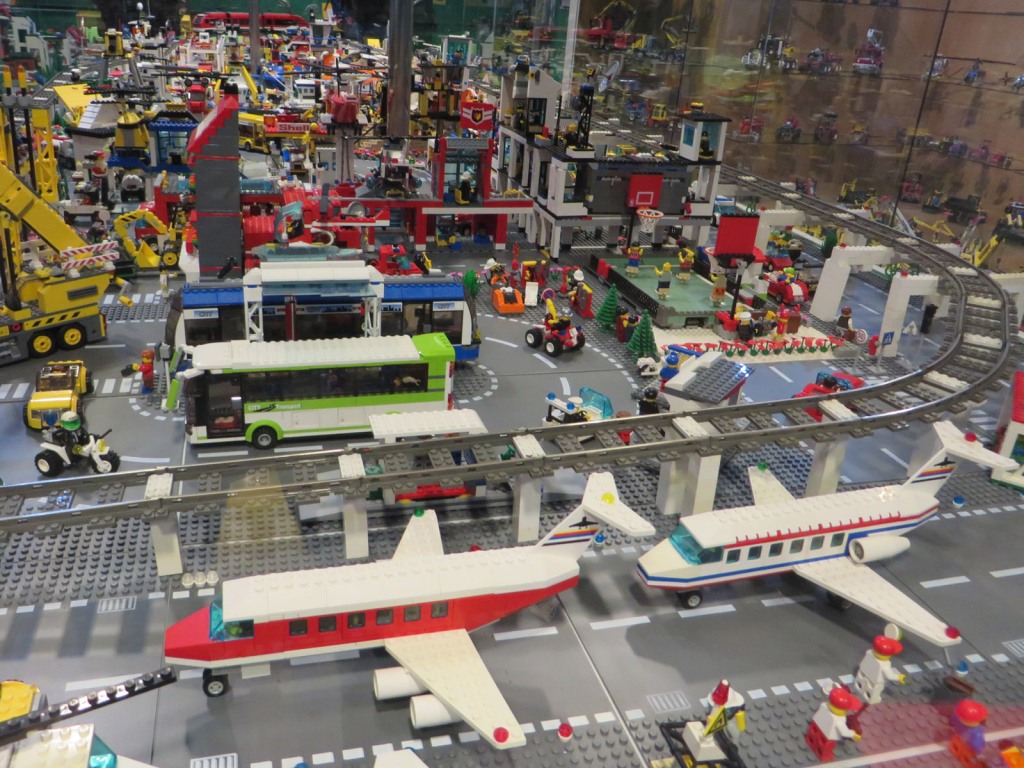
The Museum of Bricks was far more cheerful than the Museum of Communism, and features exclusively the Danish bricks of the Lego company. Many of the sets I grew up with in the 80s and 90s were represented, and I practically had to be dragged out at the end.
Like most major European cities, Prague has a comprehensive metro system, but with some very pleasing decorative patterns. Here at Můstek station beneath Wenceslas Square, the stylings of the 1970s remain dominant.


For dinner on our final evening, we repaired to Žižkov Television Tower and its fine restaurant with views across the city. The almost random form of the tower is adorned with giant crawling gravity-defying babies, because why not. The sculptor is David Černý, the same artist responsible for the peeing blokes at the Kafka Museum, of course.
Created 2024
